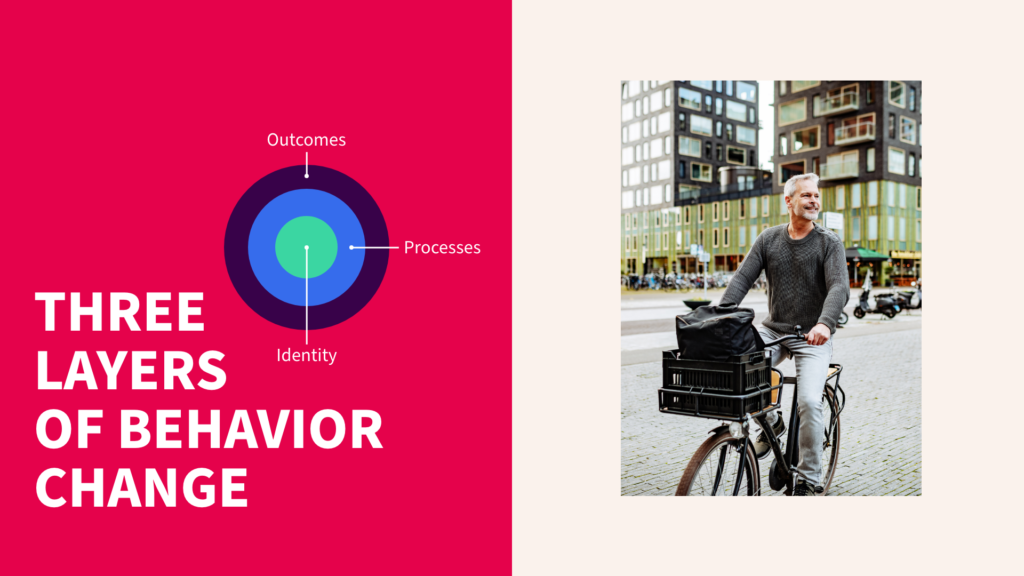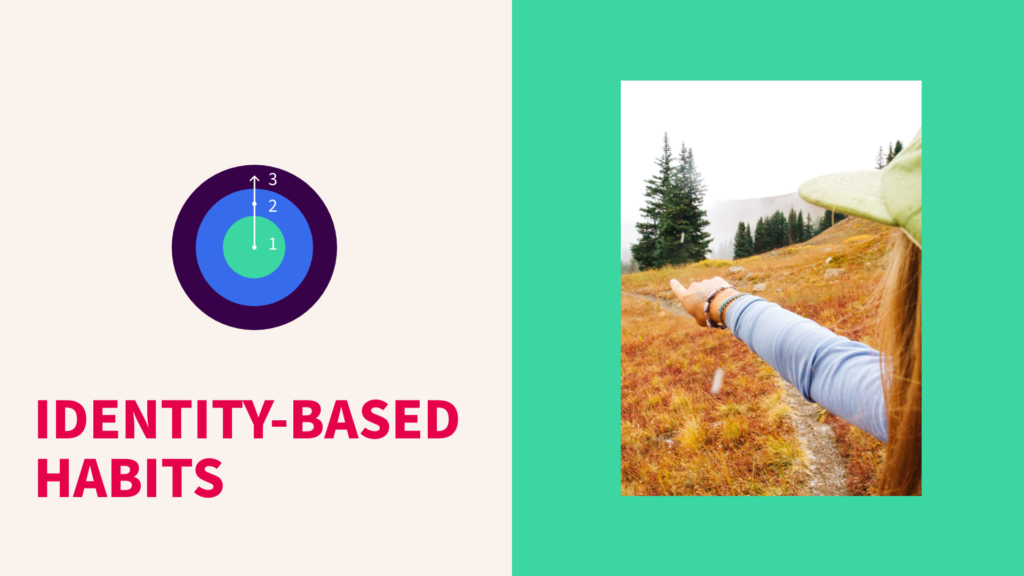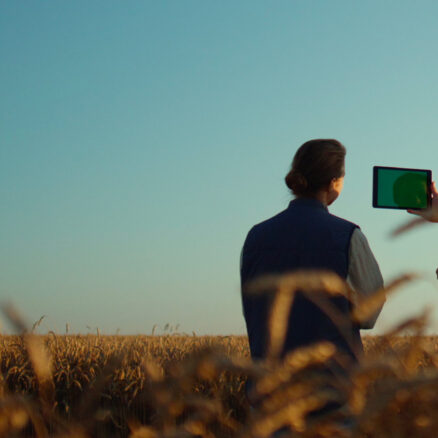In brief:
- Despite the growing number of ambitious sustainability goals, global GHG emissions continue to rise.
- Businesses that set goals that conflict with their underlying beliefs and value systems won’t be able to deliver lasting change.
- Real change is identity-based. To change course, companies must first change the core beliefs that led to past behaviors.
True behavior change is identity change. When your behavior and your identity are fully aligned, you are no longer pursuing behavior change. You are simply acting like the type of person you already believe yourself to be.
James Clear
Science-driven goals, roadmaps and action plans are the cornerstone of any good sustainability strategy, but when it comes to creating lasting change, they’re not enough on their own. Sustainable transformation won’t be possible unless we take a hard look at the core beliefs that gave rise to past behaviors and forge a new way forward.
Heading straight for the iceberg
The most common definition of sustainability comes from the UN World Commission on Environment and Development and dates back to 1987: meeting the needs of the present without compromising the ability of future generations to meet their own needs. Sustainability recognizes that resources — natural, social and economic — are finite and should be used conservatively with a view to long-term priorities and consequences of overexploitation. Sustainable practices support ecological, human, and economic health and vitality.
Over the course of the 20th century, society made some significant progress on the “meets the needs of the present” part of this definition:
- Global poverty: Around the world, the share of people living in extreme povertydeclined dramatically over the last 200 years.
- Child mortality: Global child mortality dropped from43% in 1800 to 4.5% in 2015.
- Education: Global estimates of literacy and school attendance have climbed; today over80% of the world population is literate. Inequalities in access to education, though they still exist, have also decreased.
Unfortunately, we didn’t do very well in guaranteeing “the ability of future generations to meet their own needs.” The 20th century was also marked by sharp increases in environmental degradation, natural resource consumption, waste, pollution and greenhouse gas (GHG) emissions. Human activity hassignificantly altered 75% of Earth’s land and 66% of its marine environments.Biodiversity is in free fall. And global energy-relatedCO2emissions are at their highest-ever level following the COVID-19 crisis.
It’s fair to say that economic growth over the last 200 years came at the expense of the natural environment. If we continue on this path, we will irreversibly damage the foundation on which these achievements were built.
But not all is lost. Many countries and organizations recognize the crisis unfolding around us for what it is: an emergency. Companies and brand owners, too, are reconciling with the hard truth that transgressing planetary boundaries is bad business. And an ever-increasing number are taking action to alter the trajectory.
Let’s take climate change as an example. In 2015, 196 countries signed the Paris Agreement, a legally binding international treaty that aims to stop global warming in this century. At the same time, the Science Based Targets initiative (SBTi) was established to support companies in their efforts to reduce GHG emissions in line with the latest climate science. Today, over 2,200 corporations covering over one-third of the global economy’s market capitalization work with SBTi.
It’s much needed progress. But despite the growing number of ambitious goals, global GHG emissions continue to rise. Nations and corporations fail to meet their climate pledges year after year. According to the most recent Corporate Climate Responsibility Monitor, “corporate climate targets for 2030 fall well short of the ambition required to align with the internationally agreed goals of the Paris Agreement.” The news from the Climate Action Tracker isn’t any brighter: no country is currently on track to meet the 1.5˚C goal. We’re seeing similar trends for other planetary boundaries — biodiversity, water, land, and biogeochemical flows.
We’re heading straight for the iceberg. Why aren’t we changing course?
Deep transformation requires identity-based change
To find the answer, let’s turn toJames Clear, one of the most well-known experts on behavior change. In his book, Atomic Habits, he highlights the difficulty of creating real change and why setting goals alone won’t get us where we want — and need — to be as individuals, organizations and societies as a whole.
According to Clear, three are three levels at which change can occur (like layers of an onion): outcomes, processes or identity.
- Outcomes: The first layer of the change onion is concerned with outcomes: conducting a life cycle assessment, publishing a sustainability report, reducing emissions. Most goals companies set fall into this category.
- Processes: The second layer is concerned with changing habits: implementing a new manufacturing process, using recycled packaging material, buying renewable electricity. Processes are the routines that make outcomes possible.
- Identity: This layer is focused on changing beliefs, values, assumptions, biases and worldview. For example, if the leader of a chocolate company believes that every person has the same human rights, they will be more inclined to take action to ensure it sources slavery-free cocoa. If they value financial gains more than social justice, they’ll aim to buy the cheapest cocoa.

Each level of change has its merits and is useful in its own way. The problem is the direction of change. Most people and organizations are just scratching the surface; they focus on what they want to achieve, not who they want to become. They think ‘I want to be climate neutral’ (outcome) and will implement a new technology (process) to make it happen. They set goals without considering the beliefs and worldviews (identity) that underpin current practices. But we can’t solve problems by using the same kind of thinking we used when we created them.
Clear explains that behind every action is a set of beliefs that drives them. For example, reducing GHG emissions is aligned with the brand identity of outdoor clothing and gear company Patagonia, whose mission is rooted in impact and environmentalism. The same can’t be said for an oil and gas company whose identity is naturally at odds with sustainability.

Behaviors that don’t align with core beliefs and values will not last. Your goal may be to reduce emissions or water consumption, but if you value profit more than climate justice, you’ll be more inclined to greenwash than take meaningful action. It’s hard — impossible even — to change your behavior if you don’t first change the underlying beliefs that led to past behaviors.
Real change is identity-based. A person might start a new habit out of motivation, but it’s unlikely to stick unless it becomes part of their identity. The same goes for business. Companies can commit to reduce emissions to keep up with competitors, but they’re unlikely to make good on those commitments unless they embed them into their value systems. If we think about it this way, the goal is not to reduce emissions, it’s to become a sustainable company.

For real progress, get ready to unlearn
Many companies, much like individuals, are operating on autopilot, blindly following norms, standards and practices that were carved out long ago. We never think to examine the beliefs, values or biases that sustain business as usual. We pollute for years until we’re no longer able to envision another way of doing business.
All beliefs are formed through learning and conditioning. Our habits and business practices are the embodiment of our beliefs. They also reinforce our beliefs. The more we repeat and encourage certain behaviors (e.g., sell more every year), the deeper we ingrain the underlying belief (more is better). This makes unlearning critical.
Unlearning isn’t about forgetting. It’s about consciously choosing a new way of thinking, a new way forward. There are three main steps to unlearning:
- Recognize that your current identity is no longer serving you or doesn’t align with your goals. The first step of unlearning requires us to question everything — who we are, what we believe, what we value and why we do what we do. Yes, it can be uncomfortable to admit that the things we’ve built have foundations in an outdated and problematic model. It’s always more comfortable to maintain the status quo than to change. But here’s the thing: there can be no growth without discomfort.
- Shape a new identity that can better achieve your sustainability vision. Think about what kind of company you want to be. What do you want to stand for? Ask yourself, “What is the type of company that could get the outcome I want? What are their principles and values?”
- Ingrain your new identity into behaviors. It’s easy to fall back into old ways unless there are checks in place to keep you on track. For example, reimagining business models for sustainability, putting in place a sustainability governance structure that ensures sustainability is integrated across the business, or tying performance to sustainability goals and KPIs for every business function.
If we can embody new and better beliefs, we can start doing things differently tomorrow. As management legend Peter Drucker put it: “Culture eats strategy for breakfast.” If our belief system (organizational culture) is in conflict with goals and actions (strategy), the first will always beat the latter. To change course, we need to change our core.




